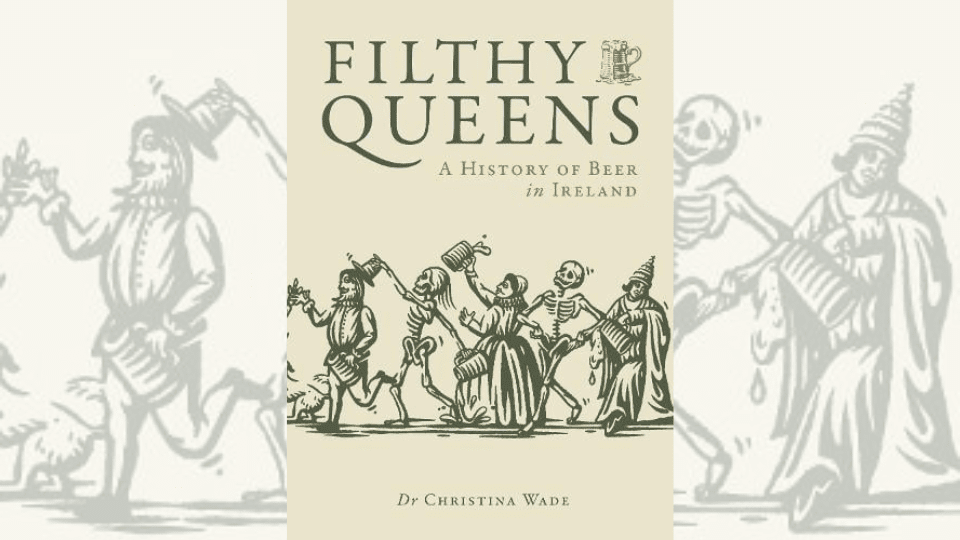
It has taken me the longest time to finish reading Filthy Queens, a history of beer in Ireland by Dr Christina Wade. That is absolutely no reflection on the quality of the book, but more on the quality of myself. It has alerted me to the fact that I really need more time to just sit and read. I remember as a kid, I would devour books.
I’d take out my maximum allocation from the library and be ready to return them just a few days later. And of course at university, I would read and read. For my weekly essays, but also further around the subject. Now there just doesn’t seem to be the same number of hours in the day. Perhaps because there is a family, a house, a cat and a working life that weren’t there when I was a kid.
But the opening chapters of Dr Wade’s book – or shall I call her Christina? That’s what I call her when she’s stood in front of me, so it’s probably best. The opening chapters of her book took me right back to my uni days. It looks at the history of beer in early medieval Ireland, a period I adored studying but have barely thought about since. Familiar characters like St Brigid and the Kings of Tara leapt from the pages and greeted me like old friends. Christina references documents and poems that were familiar to me, but sheds fascinating new light on them through her laser focus on this history and culture of beer.
While this book has a clear commitment to academic rigour, the writing also has a lightness, an informality, that makes it hugely readable. Christina digs deep into the stories of women that are rarely told – the brewers, the maltsters and more – but contextualises them in terms that anyone can identify with. She peppers her writings with modern idioms and pop culture references that really helps to bring the many stories she tells to life.
Filthy Queens is a great read, but it is dense. As Christina led me more towards the relatively modern history of Ireland, I found myself increasingly lost. As the names and events she was describing were unfamiliar to me, it was sometimes hard to remember who was who and to properly follow her argument in the same way that I could in the comfortable territory of the medieval period. That doesn’t stop this book being an incredible resource; something that I have already found myself dip back into to refresh my memory or check an assertion.
There is an absolutely astonishing amount of research packed into this deceptively slender volume and Christina’s mastery of her subject across multiple historical time periods is nothing short of incredible. It will be a long time before anyone comes close to superseding this work in terms of breadth and quality of analysis.
I read a review copy that was sent to me for free, but rest assured my review is purely my own opinion. I would have written exactly the same had I purchased the book myself.







